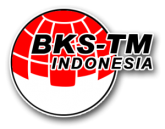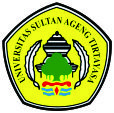Measurement of Geometric And Functional Accuracy With ISO 1710 Standard on Feasibility of Welding Bending Test Equipment
Abstract
The bending test tool is a machine used for the bending strength testing process to determine the mechanical properties of metal materials and welded joints. Therefore a machine needs to have machine elements with ideal functional and geometric characteristics. The frame, hydraulics, and specimen mounts are examples of important machine elements in bending test machines. The ISO 1710 standard which is applied in functional and geometric testing of bending test equipment is expected to help analyze the test so that the bending test tool becomes more accurate the test results. The expected accurate category is the size, shape, and pressure applied to the specimen as desired. The accuracy of bending test equipment performance is very important in the manufacturing process to produce high-quality products. Testing includes functional on the frame by comparing actual dimensions and design, welding strength by comparing manual calculations and actual welding tests, and testing cylinder strength by comparing manual calculation of cylinder selection with the actual operation of cylinders on bending test equipment, and geometric testing, namely measuring flatness with deviations. permissible straightness 0.02mm per 1000mm, straightness with an allowable deviation of 0.025mm per 300mm and straightness 85 ° -90 ° in welded joint bending test equipment. The geometrical test results of flatness measurement at datum A using a waterpass are stated not to exceed the permitted limits with a flatness result of 0 °, the alignment test of the frame against datum A using a waterpass is still in accordance with the allowable deviation limits with the test results of the right side 89.7 ° and the left side 89.8 °, the test the alignment of the cylinder with the dial gauge is stated to be still in accordance with the permissible deviation with the results of the X-axis 0 mm and Y-axis 0 mm. measuring ruler with the results of each predetermined measurement point is 800 mm, geometric deviations were found on the flatness test of the specimen jig holder in the longitudinal and transverse directions, namely 0.2 ° or 0.88 mm on the backside of the stand or the third measurement, this is probably due to because the thickness of the diameter welded mount, it is highly recommended to re-weld so that the test results are in accordance with the permitted deviation. The results of the functional testing of the bending test equipment are stated to be able to carry out tests with an accuracy of 95-99% with details of the comparison of the dimensions of the frame with the actual test, the functional testing of the frame based on the strength of the welding and the functional testing of the cylinder is still below the allowable limit.
Keywords
Full Text:
PDFReferences
Bagus,Wisnu. (2020). 2020, Industri Manufaktur Ditargetkan Tumbuh 5,3 Persen. Jakarta. Beritasatu.com. https://www.beritasatu.com/whisnu-bagus-prasetyo/ekonomi/593944/2020-industri-manufaktur-ditargetkan-tumbuh-53-persen
Rochim, T. (2001). Spesifikasi, Metrologi, dan Kontrol Kualitas Geometrik (1st ed.).
Rochim, T. (2015a). Alat Ukur Geometrik dan Pemakaiannya.
Harsono Wiryosumarto. (2000). Teknologi Pengelasan.
Hendrianto, M. (2018). Pengaruh Arus dan Jarak Kampuh Pengelasan Terhadap Distorsi Sambungan Pelat Baja Karbon Rendah dengan Menggunakan SMAW. Pengaruh Arus Dan Jarak Kampuh Pengelasan Terhadap Distorsi Sambungan Pelat Baja Karbon Rendah Dengan Menggunakan SMAW, 4(1), 20–25.
Agung Pambayu, C. B., Irawan, A. P., & Utama, D. W. (2017). Perancangan Ulang Alat Uji Fatigue Rotary Bending.Poros,13(2),42.https://doi.org/10.24912/poros.v13i2.817
Rochim, T. (2015b). MPE ( Mechanical Production Engineering ).
Runtu, R. R., Soukotta, J., & Poeng, R. (n.d.). Analisis Kemampuan Dan Keandalan Mesin Bubut Weiler Primus Melalui Pengujian Karakteristik Statik Menurut Standar ISO 1708. 4, 63–75.
Syam,W.P.(2018a). Metrologi Manufaktur: Pengukuran Geometri dan Analisis Ketidakpastian. January,204.https://osf.io/preprints/inarxiv/zdf/.
Rikosa, S. A., Sumiati, R., & Yetri, Y. (2018). Uji Kelayakan Mesin Frais Type Schaublin 13 Menggunakan Metoda Pengujian Ketelitian Geometrik. 1(2), 48–55.
Julian, A., & Purnomo. (2005). Studi Kemampuan dan Keandalan Mesin Freis C2TY Melalui Pengujian Karakteristik Statik Menurut Standar ISO 1710. Traksi, 3(2), 1–6
Akhmad Maulana, M. (2015). Penyimpangan geometrik menggunakan universal bridge , carriage dan spirit level pada bedways. 66.
Junadi, J. (2019). Metrologi dan pengukuran. Universitas Harapan.
Syam, W. P. (2018b). Toleransi Dimensi dan Geometri Analisis Rantai Variasi Dalam Proses perakitan Produk. July, 204.
Yuhas, D., & Sumpena, A. (2016). Pengukuran Statis Ketelitian Geometrik Mesin Bubut Maximat V13 Di Bengkel Teknik Mesin Pnj Menurut. 15(3), 215–228.
Prasetyo,E.(2006).Pengujian geometrik mesin perkakas (mesin bubut). 2(1), 15–19.
Society, J. welding engineering. (2008). E-Book_Rumus pengelasan JWES.pdf.
Schlesinger, G. (1978). Testing Machine Tools. In Mechanics Research Communications (7th ed., Vol. 5, Issue 5).
Products, Y. (2000). Hose and fittings. Metal Finishing,98(10),74.https://doi.org/10.1016/s00260576(00)83467-4.
Reutlingen, U. F., Messstetten, R. G., Wangen im Allgäu, M. H., Neckeartenzlingen, R. K., Balingen, F. N., Amtzell, S. O., Mühlacker, H. P., Kressbronn, & Stephan, A. (2018). Mechanical and Metal Trades Handbook.428.https://osf.io/preprints/inarxiv/zdfxm/
Tsauri, S. (2018). Bending Untuk Pengujian Material Logam. 12.
Hoo Fatt MS, Sirivolu D. A wave propagation model for the high velocity impact response of a composite sandwich panel. Int J Impact Eng [Internet]. 2010;37(2):117–30. Available from: http://dx.doi.org/10.1016/j.ijimpeng.2009.09.002
Sun Y. Tribology International Sliding wear behaviour of surface mechanical attrition treated AISI 304 stainless steel. Tribiology Int [Internet]. 2013;57:67–75. Available from: http://dx.doi.org/10.1016/j.triboint.2012.07.015
DOI: http://dx.doi.org/10.36055/fwl.v1i1.9013







